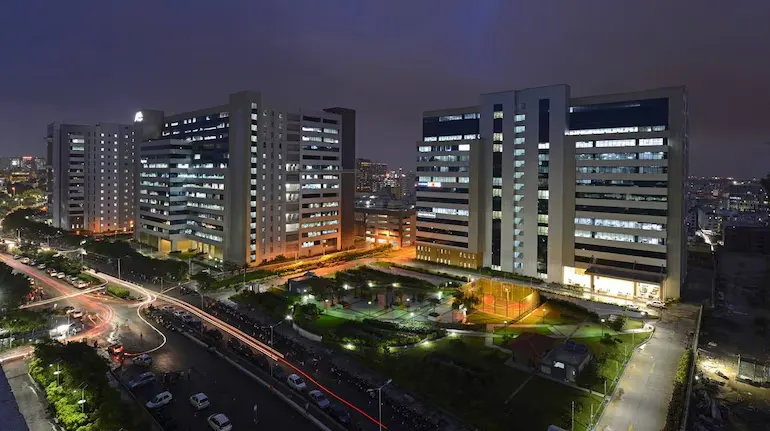Table of Content
- Table of Contents
- 1. Introduction to Dholera Smart City Project
- 2. Development of Dholera Smart City
- 3. Zoning in Dholera Smart City
- 4. Advantages of Investing in Dholera Smart City
- 5. Phases of Dholera Smart City Project
- 6. Final Completion and Continuous Development
- Dholera Smart City Project Timeline Overview
- 7. Infrastructure Plans and Facilities
- 8. Current Progress and Future Outlook
- Conclusion
The Dholera Smart City Project is one of India's most ambitious urban development initiatives, aiming to create a cutting-edge, sustainable, and technologically advanced city. Located in Gujarat, Dholera Smart City is designed to be a future-ready hub, supporting residential, commercial, and industrial growth. This article provides an in-depth overview of the development, zoning, advantages, and features of the Dholera Smart City Project, using simple language for clarity. We'll also explore the various components that make this project stand out on the global stage.
Table of Contents
- Introduction to Dholera Smart City Project
- Development of Dholera Smart City
- Zoning in Dholera Smart City
- Advantages of Investing in Dholera Smart City
- Key Features of Dholera Smart City
- Infrastructure Plans and Facilities
- Current Progress and Future Outlook
- Conclusion
- FAQs
1. Introduction to Dholera Smart City Project
The Dholera Smart City Project is part of India's Smart Cities Mission, aiming to transform urban centers by integrating technology, infrastructure, and sustainability. Dholera is set to become the largest smart city in India, spanning over 920 square kilometers. Strategically located between the cities of Ahmedabad and Bhavnagar, Dholera will house advanced facilities for industries, residential sectors, and service-based businesses, making it an attractive investment opportunity.
The city is being developed with a vision of creating a self-sustaining ecosystem with world-class amenities. It focuses on environmental sustainability, economic growth, and quality of life, making it one of the most anticipated smart cities in India.
2. Development of Dholera Smart City
The Dholera Smart City Project is being developed under the Special Investment Region (SIR) Act of the Gujarat government. It was conceptualized as part of the Delhi-Mumbai Industrial Corridor (DMIC) and is being developed with global standards in mind.
Key Development Aspects:
- Phase-wise Development: The project will be completed in phases, with the initial phase covering 22.5 square kilometers.
- World-Class Infrastructure: Advanced urban planning techniques are being used to build roads, drainage systems, sewage networks, and power grids.
- Sustainability: The city is designed with green energy solutions, including solar farms and rainwater harvesting systems.
- Government Support: The Indian government, in collaboration with international investors, has provided financial backing for the project’s development.
3. Zoning in Dholera Smart City
Dholera Smart City is divided into various zones to ensure optimal use of land and resources. Each zone serves a specific purpose and caters to different sectors such as residential, commercial, and industrial.
Main Zones in Dholera Smart City:
- Residential Zone: Includes smart homes, green buildings, and eco-friendly housing options.
- Industrial Zone: Dedicated to manufacturing units, logistics, and industrial parks.
- Commercial Zone: Includes shopping centers, office spaces, and service hubs.
- Recreational Zone: Parks, public spaces, and entertainment zones for leisure activities.
- Special Economic Zone (SEZ): Offering tax benefits and other incentives to attract foreign and domestic investments.
The division of the city into well-planned zones ensures streamlined operations and enhances the overall efficiency of services within the city.
4. Advantages of Investing in Dholera Smart City
Investing in the Dholera Smart City Project offers several advantages for both individual buyers and businesses. The city’s well-planned infrastructure and its strategic location make it an attractive option for investors.
Key Advantages:
- Strategic Location: Proximity to key cities like Ahmedabad and Bhavnagar, and excellent connectivity via highways, railways, and the upcoming Dholera International Airport.
- Economic Growth: The city is set to become a major industrial and economic hub, fostering job creation and economic development.
- Affordable Real Estate: Competitive pricing for residential and commercial properties makes Dholera a great investment destination.
- Government Support: The project is backed by strong government policies, ensuring smooth and timely completion.
- Sustainability: The city is designed to be eco-friendly, incorporating green energy and efficient waste management systems.
5. Phases of Dholera Smart City Project
- Activation Area (Phase 1)
The first phase of the Dholera Smart City Project is known as the Activation Area, covering an area of 22.5 square kilometers. This phase is the most crucial because it sets the foundation for future development in the city. The infrastructure development in this phase includes:
- Roads and Transport: Construction of internal roads, connectivity with the national highway, and public transportation systems.
- Utilities: Underground electricity lines, water supply, and sewage systems.
- Land Use Planning: Zoning for residential, industrial, and commercial purposes.
- Social Infrastructure: Construction of schools, healthcare centers, and public utilities.
- Dholera International Airport: Development of the international airport to enhance connectivity with global and domestic markets.
Timeline: The Activation Area is the first region expected to be completed, with ongoing construction of basic amenities and utilities.
- Phase 2
Phase 2 of the Dholera Smart City Project will focus on expanding the infrastructure to cover a larger area of the city. This phase will build upon the foundation laid in the Activation Area and extend it to additional areas in the city.
Key Developments in Phase 2:
- Extended Residential Zones: Expansion of housing projects, offering more affordable and luxury housing options.
- Increased Industrial Capacity: Development of more industrial parks, logistics hubs, and manufacturing units.
- Commercial Hubs: Establishment of new shopping malls, business centers, and office complexes.
- Public Amenities: Construction of additional parks, recreational centers, and public spaces.
Key Focus: In this phase, the emphasis will be on accommodating the influx of residents and businesses by providing ample housing, job opportunities, and commercial facilities.
Timeline: Expected to begin once the Activation Area is near completion, with significant developments expected within a few years.
- Phase 3
Phase 3 is a crucial phase where the city will start to see more technological integration and smart city features.
Key Developments in Phase 3:
- Smart City Infrastructure: Implementation of smart grids, intelligent traffic management, and advanced surveillance systems.
- Green Energy Solutions: Construction of large-scale solar farms and renewable energy plants.
- Expansion of Public Transport: Development of metro lines, bus rapid transit systems, and expanded road networks.
- Innovation and Technology Zones: Special zones dedicated to innovation hubs, tech startups, and research & development centers.
Key Focus: Phase 3 will ensure that Dholera fully embodies the characteristics of a "smart city" by integrating cutting-edge technologies in every aspect of urban living.
Also Read: Suraksha Smart City, Vasai announces new lottery under PMAY Scheme
Timeline: Development will likely occur after substantial progress in Phase 2, with an eye toward creating a future-ready city.
- Phase 4
In Phase 4, Dholera Smart City will move closer to its goal of becoming a fully sustainable and smart city with an emphasis on enhancing its livability and global appeal.
Key Developments in Phase 4:
- Completion of Smart Infrastructure: Finalization of all smart infrastructure, including city-wide Wi-Fi, real-time data monitoring systems, and sustainable urban mobility solutions.
- International Connectivity: Full operational capacity of the Dholera International Airport, making it a gateway for international trade and tourism.
- Special Economic Zones (SEZ): Expansion of the SEZs, attracting foreign direct investment and fostering global trade.
- Cultural and Recreational Facilities: Development of museums, theaters, sports arenas, and cultural centers, enhancing the city’s cultural offerings.
Key Focus: By this stage, Dholera will function as a globally recognized hub for commerce, innovation, and sustainable living.
Timeline: Phase 4 represents the final stage of the Dholera Smart City development, with an estimated completion date projected in the 2030s.
6. Final Completion and Continuous Development
Once all the planned phases are completed, the Dholera Smart City Project will continue evolving, adapting to technological advancements and population growth.
Key Features of Final Completion:
- Self-Sustaining Ecosystem: A fully operational city with robust residential, industrial, and commercial sectors.
- Advanced Urban Living: Complete integration of smart city technologies, offering residents a high quality of life.
- Global Hub: A magnet for foreign investment, multinational corporations, and research and development centers.
Dholera Smart City Project Timeline Overview
|
Phase |
Area Covered |
Key Focus |
Timeline |
|
Phase 1 |
22.5 sq. km (Activation Area) |
Basic infrastructure, utilities, and transport |
Ongoing (2024) |
|
Phase 2 |
Expanded city area |
Residential, industrial, commercial growth |
Post-Phase 1 completion |
|
Phase 3 |
Entire Dholera region |
Technological integration, smart city features |
2026 onwards |
|
Phase 4 |
Full city capacity |
Smart infrastructure, international appeal |
2030s |
7. Infrastructure Plans and Facilities
One of the major draws of the Dholera Smart City Project is its robust infrastructure, designed to meet the needs of a growing population.

Major Infrastructure Projects:
- Dholera International Airport: Set to become a major airport connecting Dholera to international destinations.
- Solar Park: A large-scale solar power project aimed at making Dholera energy efficient.
- Underground Utilities: Unlike conventional cities, Dholera’s utilities, including water, power, and telecommunications, will be managed underground.
|
Area |
Infrastructure Highlights |
|
Residential Zone |
Smart homes, parks, schools, and healthcare facilities |
|
Industrial Zone |
Industrial parks, logistics hubs, and warehouses |
|
Commercial Zone |
Shopping centers, hotels, and office complexes |
|
Special Economic Zone |
Tax incentives for businesses, international standard facilities |
8. Current Progress and Future Outlook
The Dholera Smart City Project is progressing steadily, with several key infrastructure projects already completed or in advanced stages of development. The city's core infrastructure, including roads, power grids, and water supply systems, is being constructed.
As per projections, the city will play a pivotal role in India's economic growth, attracting both domestic and foreign investors. Its advanced infrastructure and strategic location are expected to boost industrialization and employment opportunities.
Conclusion
The Dholera Smart City Project is not just an urban development initiative but a vision for the future of smart, sustainable cities in India. With state-of-the-art infrastructure, world-class amenities, and a focus on sustainability, Dholera is set to become a model for other cities to follow. Whether you’re looking for investment opportunities or considering moving to a smart city, Dholera offers tremendous potential for growth and prosperity.
Also Read: Mukesh Ambani’s RIL Arm To Build Greenfield Smart City Near Gurugram; All You Need To Know




_1765272256.webp)



Ans 1. The Dholera Smart City Project is a large-scale urban development initiative in Gujarat, aimed at creating a sustainable, smart city with advanced infrastructure and facilities.
Ans 2. The project includes smart infrastructure, renewable energy sources, intelligent traffic management, and world-class amenities for residents and businesses.
Ans 3. Yes, Dholera offers affordable real estate prices, government support, and excellent connectivity, making it an attractive investment destination.
Ans 4. The city is divided into residential, commercial, industrial, and recreational zones, each catering to specific needs.
Ans 5. The project is being developed in phases, with the first phase expected to be completed soon, while the entire city will take several years to fully develop.